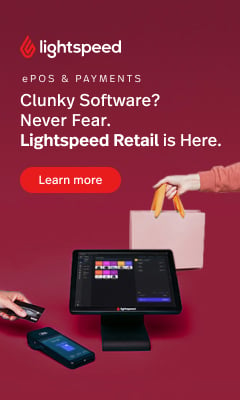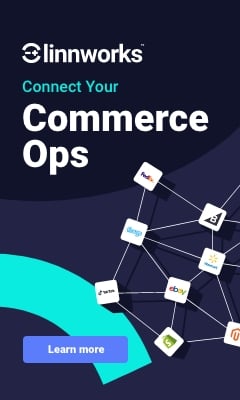Q&A: Marc Pegulu, Vice President Wireless LoRa & IoT – Semtech
Marc Pégulu is the Vice President of Internet of Things in Semtech’s Wireless and Sensing Products Group and has been with the company for more than 12 years. Mr. Pégulu joined the company in March 2006 and was involved in several key technology initiatives, including LoRa® wireless and software defined modem technologies. Prior to joining Semtech, he held positions in chips and systems development at Thomson CSF, Thales, ATMEL, and DibCom in France and China.
Mr. Pégulu holds a Master of Science degree in Electronics and Telecommunications from Institut National Polytechnique of Grenoble, France and is a graduate of the Executive MBA program of ESCP Europe.
Can you tell us a bit about your background?
I am the Vice President of Internet of Things in Semtech’s Wireless and Sensing Products Group. I joined Semtech in 2006 and have been involved in several key technology initiatives including LoRa® wireless and software defined modem technologies. Prior to Semtech I have worked in chips and systems development at Thomson CSF, Thales, ATMEL and DibCom in France and China, I also hold a Master of Science degree in Electronics and Telecommunications from Institut National Polytechnique of Grenoble, France and I’m a graduate of the Executive MBA program of ESCP Europe, so I’ve seen the evolution of the technology first-hand and know how hard it is to do well. The world of retail technology is changing fast, and I’m really privileged to have been involved with these changes over the last two decades.
What does your company do? / What is your USP?
Semtech is a technology company based in California, USA. We created LoRa®, a low power, long range wireless network technology that is enabling a more smart and connected world.
Semtech’s LoRa devices and the open LoRaWAN® standard offer an efficient, flexible and economical solution to real-world problems in rural and indoor use cases, where cellular and Wi-Fi/BLE based networks are ineffective. LoRa is the de facto wireless platform of Internet of Things (IoT), enabling countless use cases in a number of key markets including smart cities, buildings, agriculture, metering, logistics and supply chain, and industrial control.
Most recently our efforts have been focussed on the retail industry and partnering with other companies to deliver smart solutions to help retailers maximise their resources and efficiency.
What’s special about the platform and your approach?
Our LoRa devices leverage the IoT to capture, share data and deliver insights. IoT solutions are revolutionising the retail industry with innovative offerings that address supply chain efficiencies, utility conservation, store security, real-time merchandise monitoring and smart anti-theft devices. In contrast to Wi-Fi or Bluetooth, LoRa can operate across vast areas and has an extended battery life of up to 10 years. It can also communicate and transmit data through thick industrial buildings and even provide tracking data in remote locations. The technology is simple, easy to use and deploy.
What advantage does it add?
LoRa technology brings a whole host of advantages. The devices work in a radio band that allows for long range, so a sensor can be kilometres away from the gateway that collects the data. This means that retailers can use one gateway to cover a whole site, or even an entire mall.
Our low power design means that the sensors can be powered by a coin cell battery for as long as a decade. This means sensors can be placed exactly where they are needed, without the need for wiring – whether that’s to count people going in and out of a shop, monitor stock for temperature or humidity. Most importantly that battery will last for up to 10 years, which is pretty much the lifetime of the equipment, so there is no need for an expensive programme to replace those batteries.
This also works well in logistics. The ultra-low power means wireless sensors can track products all the way from the factory to the shop floor, simplifying the supply chain and creating really smart solutions for the retailer.
How does a product/service implementation actually look like and how do you measure success?
Our technology enables communication between sensor devices and computers, locally or in the cloud, to deliver actionable insights and data to retailers to help them improve the efficiency and ultimately grow their business.
The end result is that consumers may enjoy a more personalized, faster and more intuitive retail experience. This can be for individualized coupons and inventories that are curated to their desires, keeping them safe as they shop.
The technology is revolutionising retail and the use cases are numerous, enabling smart retail to be versatile, efficient and dynamic, all at the same time. Access to data enabled by IoT retail applications creates efficiency as operators are able to detect and resolve potential issues before they become broadly problematic. Automation of various processes can increase security and ensure output sustainability. Smart retail also provides consumers with a faster and more targeted shopping experience.
How are retailers using your systems to gain competitive advantage and what does best practice look like? Can you share a case study with us?
We worked with InVue, the leading global provider of intelligent hardware and software systems for retail, to integrate the LoRaWAN standard into InVue LIVE products across retail display, security and operations.
“I consistently hear from our retail customers around the world about the growing need for not only data, but actionable insights which result in greater efficiency, security and less friction for shoppers in stores,” said Chris Gibson, InVue chief product and marketing officer. “With LoRaWAN, we can deliver on these priorities across a variety of retail applications through our InVue LIVE products in a simple, secure and scalable way.”
InVue’s integration of the LoRaWAN standard into the LIVE products provides key data on operational readiness, and ultimately, the shopper experience – including product availability, convenience and customer insights. This gives retailers the ability to monitor and manage these operations through a single platform, as well as deliver actionable data and insights in real time.
Each InVue LIVE device uses a LoRaWAN network to wirelessly connect to the internet while offering bi-directional communication, end-to-end security, mobility, and localization services. This functionality enables retailers to track customer interaction with display merchandise for phones and tablets through the InVue S3100V and OnePOD Wireless devices, reduce theft with OneKEY and measure on-shelf availability with the OSA Sensor.
Our collaboration with InVue is ground-breaking for both the customer and retailer by using LoRaWAN to provide easier deployment, scalability and streamlined operational costs for retailers so they can better understand what is happening in their stores.
Are there other companies you partner with?
The list is long and growing, especially with the continual efforts from the LoRa Alliance® with companies designing products with LoRa integration, services and solutions. We work with a range of companies developing the hardware, the network operators, cloud services, analytic software providers, anyone who can take advantage of the benefits the technology offers. So far, the LoRaWAN standard has been deployed in more than 120 major mobile network operators globally, and connectivity is available in more than 140 countries
Other examples of LoRa in retail are:
Apana, a market-leading technology company focussing on smart water utility systems, created a system of smart water sensors, saving Costco millions in overhead operation costs.
Axino Solutions, a leading provided of smart refrigeration applications, developed an innovative temperature monitoring solution to help food retailers digitize and automate its quality management process, comply with food safety regulations and reduce food waste.
Outside of retail, examples include:
SAS’ IoT solutions, built on Microsoft Azure and incorporating LoRaWAN connectivity, provide real-time insights into IoT data and analytics generated across multiple use cases that help solve specific challenges and offer an interconnected world with better ways to monitor and safeguard communities, people and resources.
LoRa devices provide long range, low-bandwidth connectivity for Amazon Sidewalk; LoRa devices key features – long range, low power – makes it an ideal solution for low-bandwidth outdoor and indoor smart home and smart community products. The LoRa platform in the Amazon Sidewalk network extends the range of a customer’s home network to connect both outdoor and indoor, low-bandwidth smart home products, including smart lights, pet trackers, sensors for asset tracking, smart irrigation, and a multitude of additional low cost devices needed for residential use.
What challenges and opportunities do you see in UK retail for 2021 / What challenges are retailers facing in 2021?
During the past year, retailers have faced myriad challenges due to COVID-19, and have been forced to adapt at a hypersonic pace. People counting and checking occupancy is even more important now to ensure that venues and shops are not overcrowded, and this needs wireless low power connectivity. Using people to count customers or stock is no longer an answer, and retailers want to make more use of technology, including the cloud. The challenge is getting the networks out there so that retailers can use them. There are LoRaWAN IoT networks in over 100 countries and now two global satellite networks that can connect up LoRa devices enabling global coverage from land to sea to air.
How will you address these challenges and turn them into successes?
Our work with InVue is a good example of how the technology can be used to improve the shopping experience for customers and help the retailer. The ability to have sensors where they are needed is just part of the smart solution – the data needs to be collected and turned into insights, and that’s why partnering is so important.
This combination of wireless and analytics is revolutionizing the retail industry with innovative offerings that create a more efficient supply chain, improve store security and real-time merchandise monitoring, and provide smart anti-theft devices for retail stores. Retailers also need accessible and actionable data to ensure a sustainable business model, and the systems can provide this invaluable information in real time.
What is on the horizon for you as a company?
In the last four years, LoRa has really progressed from being a great technical option to connect any IoT sensor to become a mature ecosystem driven solution that’s entered the mainstream, enabling a vast range of different applications using either private LoRaWAN networks or one of the 150+ public LoRaWAN networks deployed in over 100 countries worldwide.
In almost every industry, we see LoRa enabling the development of new solutions, allowing businesses to make data more actionable and we see the list of possible applications growing all the time.
To find out how SemTech can help your retail operation, click here.














